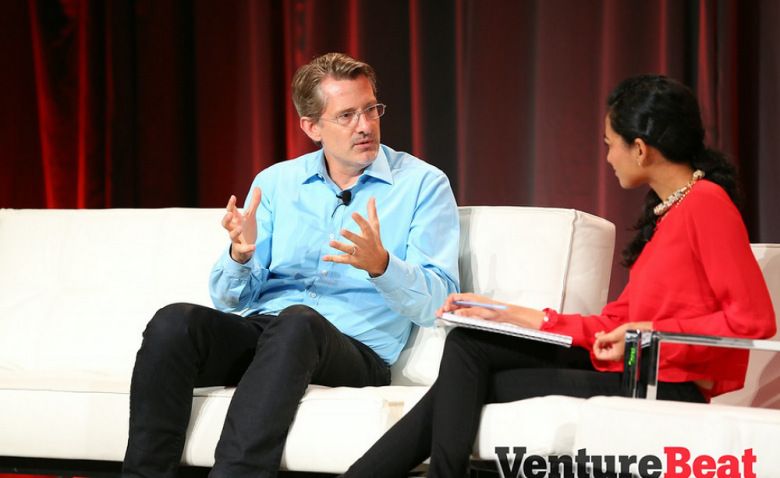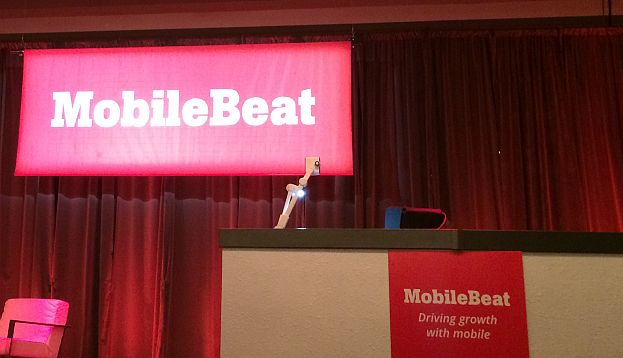The Mobile Beat show, now in its seventh year, is no longer focused on convincing people that mobile is the business to be in. The incredible growth of mobile has made it clear to many businesses that a mobile strategy is critical, because that’s where the customers and audience are. Now, says VentureBeat founder and CEO Matt Marshall in his opening remarks, “We’re talking about how to grow on mobile this year.” One of the big challenges is that while there’s $137 billion spent on advertising in the USA in the last year, not much of that is spent on mobile. Targeting and effectiveness are still not what they could be, and Marshall sees plenty of room for innovation.
Google’s global head of performance media Jason Spero talked about what’s driving growth on mobile, noting that installs are easy to track — but what really matters is usually something else, like revenue or engagement. “I think we’re at the peak of apps world,” Spero said, noting that it shouldn’t matter whether users get to your products or services through an app or a web site. Both Google and Apple are working on their operating systems to make moving between web and app more seamless. How healthy is the mobile ad business Spero is incredibly optimistic: “The glass is half-full,” Spero said. “We’ve been amazed at the growth, but we think there’s a lot more ahead as attribution improves.”
Venture capitalist Tim Lee from Sequoia Capital took the stage to break down the mobile ecosystem and show where growth is still possible. “Successful companies take advantage of tectonic shifts,” Lee noted, pointing out moments in time like the launching of the App Store and how that’s catalyzed the rapid growth of companies like Supercell and King Entertainment. Lee feels there’s plenty of growth still to come in mobile, with downloads doubling over the past year while revenue is quadrupling.
Lee discussed the scope of the mobile market, noting that there are 1.5 billion addressable devices now with millions more being added monthly. Lee pointed out that 2014 saw $30 billion in app revenue, and $30 billion in advertising spent on mobile. The part that most people don’t think about, Lee said, is that $100 billion in commerce took place on mobile platforms last year, which dwarfs the other categories. There’s plenty of activity that’s initiated or mediated by mobile devices that’s not even being captured by most statistics, everything from orders placed with Starbucks to documents being placed in a Dropbox account. Mobile is increasingly woven into many aspects of our lives, and companies that still don’t understand that are risking their future.
 Kabam COO Andrew Wakefield (Image credit: VentureBeat)
Kabam COO Andrew Wakefield (Image credit: VentureBeat)
Richard Alfonsi from Twitter joined John Lorge from Electronic Arts to talk about mobile user acquisition via Twitter. “Social is great for acquisition,” noted Lorge, citing how easy it is to target people who are following specific cars or the Need For Speed movie. Lorge talked about EA’s experiences with using Twitter as a promotion vehicle by buying promoted tweets, which you can obtain directly from Twitter or through a third party. Lorge noted that Twitter works particularly well for this in Japan, where it’s otherwise hard to reach users. Alfonsi noted that while Twitter’s promoted tweets are still in the beta period, they are working very well. “It’s still early days, but we’re seeing good responses,” said Alfonsi.
Another important topic was successful mobile user re-engagement, discussed by Adam Foroughi from AppLovin and Mike Bidgoli from Living Social. They started out by saying that over 50 percent of consumer engagement is coming from mobile devices these days, and that percentage is only going to increase. Foroughi’s goal is to make brands aware of the potential for mobile. He noted that the most competent companies are already driving 40 to 50 percent of their business through mobile, but many companies still only see 10 or 15 of their business coming from mobile despite having created an app or modified their web site for mobile use. Successful companies have invested heavily in mobile, Foroughi said, and they have redisgned their websites and user experiences from the ground up for mobile. Still, mobile user acquisition isn’t easy. “Gaming companies are buying up all the inventory,” Foroughi said.
International markets were the topic discussed by Kent Wakefield, COO of rapidly growing game company Kabam. “Asia will command over 50 percent of the installed base,” Wakefield said. “Anybody who’s not thinking about Asia should be.” Wakefield pointed out that Asia is currently a bigger market than North America for gaming — it’s almost double the size and has 50 percent market share. It’s not enough to see the opportunity, though — you have to be able to take advantage of it. “The how is a lot more challenging,” Wakefield acknowledged. “It’s a very tough market to crack. There are lots of issues to address, but if you can address them it’s a tremendous opportunity.”
Wakefield pointed out some of the issues that are tough ones, from language and cultural differences to the sever fragmentation among devices, operating systems, and app stores (there are over a dozen different Android app stores that have significant market share in China alone). One bright spot are the chat apps like Line, Kakao, and WeChat, which are increasingly driving game installs and revenue. ” If Line or Kakao takes a certain percentage, you can think of that as marketing,” Wakefield said. “The ability to get users and drive installs is definitely valuable, and for those companies at the top of the charts, it’s definitely paid off.”
While Western companies haven’t made great inroads into the Asian markets, Wakefield is optimistic. “I think we’re right around the corner from it,” he said. “The companies that do get it right will build a structural advantage for themselves. 2015 is the year you start to see Western companies truly be on the top of the charts in Asia.”

